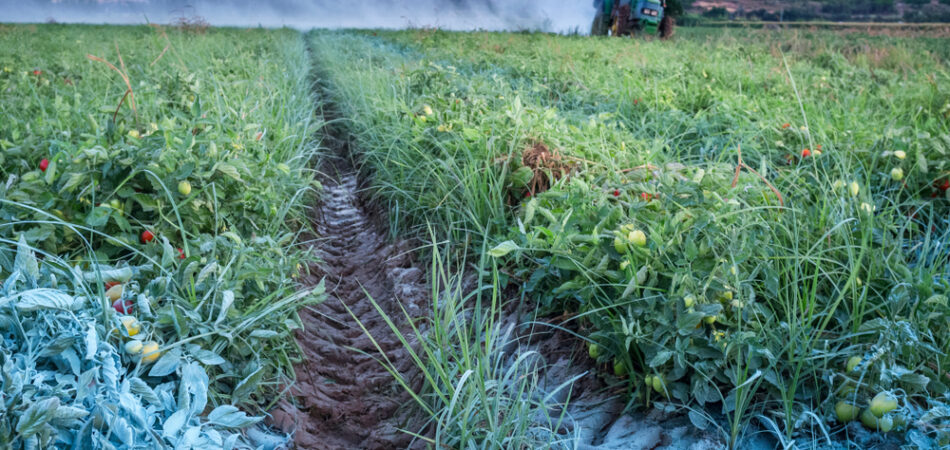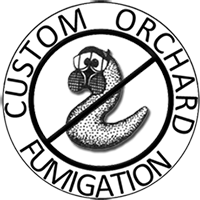
Soil fumigation is a scientifically driven agricultural practice that plays a critical role in maintaining healthy crops and productive farmland. It involves the controlled application of gaseous chemicals into the soil to eliminate pests, pathogens, weeds, and nematodes that threaten root systems and crop yields. For growers in WA and OR, understanding how soil fumigation works is essential to achieving consistent agricultural success, especially in regions where soilborne pests and diseases are persistent.
At its core, soil fumigation relies on the principle of gaseous diffusion. When fumigant compounds are applied to the soil, typically in liquid or gas form, they volatilize and move through soil pores, effectively targeting organisms that inhabit the root zone. This process disrupts the biological and chemical environment of the soil long enough to eradicate harmful microorganisms while maintaining conditions conducive to beneficial microbial recolonization afterward. The practice is part science and part precision management, requiring careful calibration based on soil type, moisture, temperature, and organic matter content.
The science explained behind soil fumigation underscores the need for understanding how different fumigants behave. Each chemical compound has a specific volatility, diffusion rate, and reactivity, which determine how effectively it can penetrate the soil and eliminate pests or pathogens. For instance, some fumigants target nematodes and fungal spores, while others are designed to control weed seeds or bacteria. By adjusting dosage, depth, and timing, professionals ensure the gas reaches the right soil layers without escaping into the atmosphere or causing crop injury.
The Biological Science Behind Pest and Pathogen Control
The goal of soil fumigation is to suppress the biological threats hidden beneath the soil surface that can devastate crops before they even emerge. The biological science behind this process involves disrupting the life cycles of pests and microorganisms that reside in the rhizosphere. These include nematodes, fungi, bacteria, and even insect larvae. Each of these organisms has unique vulnerabilities that fumigants exploit through chemical reactions and oxygen displacement.
Nematodes, for example, are microscopic worms that feed on plant roots, causing stunted growth and yield loss. Soil fumigants containing methyl isothiocyanate (MITC) precursors can penetrate the soil to kill nematode eggs and adults by inhibiting their enzymatic and respiratory systems. Fungal pathogens like Fusarium, Pythium, and Verticillium wilt are also common in WA and OR soils, thriving in the cool, moist conditions of these regions. Fumigation gases interfere with their spore viability and disrupt cellular membranes, making it impossible for them to recolonize.
One of the most fascinating aspects of soilborne pest and pathogen control fumigation is its ability to reach microscopic organisms that are otherwise untouchable by surface treatments or conventional pesticides. Pathogens that form resilient structures like sclerotia or cysts can survive for years in untreated soil. Fumigants act as a broad-spectrum solution, diffusing through soil pores to contact and neutralize these resistant forms directly.
Additionally, the temporary reduction of microbial activity creates an opportunity for beneficial microbes to recolonize the soil once the fumigant dissipates. This microbial succession often results in a healthier balance of organisms that promote nutrient cycling and disease suppression. This scientific balance between eradication and recovery illustrates why soil fumigation remains one of the most effective and sustainable methods of soilborne pest management when applied correctly.
The Chemistry of Soil Fumigants: How They Work
To truly understand how soil fumigation works, it helps to explore the chemistry behind the fumigants themselves. Soil fumigants are chemical compounds that vaporize easily and diffuse through soil gases, making them capable of reaching pests hidden deep within the soil profile. Common active ingredients include chloropicrin, metam sodium, and 1,3-dichloropropene. Each has a unique chemical mechanism of action and environmental behavior.
Chloropicrin, for example, functions by disrupting cellular respiration and protein synthesis in pathogens. When injected into moist soil, it volatilizes quickly, forming a gas that spreads laterally and vertically, targeting bacteria, fungi, and nematodes. Metam sodium, on the other hand, breaks down into methyl isothiocyanate (MITC) when it comes into contact with water. MITC is the actual biocidal agent that binds to amino acids and enzymes in pest cells, effectively denaturing proteins and halting biological processes.
Temperature and moisture play critical roles in determining the reaction rate of these chemicals. In the cooler climates of WA and OR, soil temperatures can influence how quickly fumigants convert and spread. Moisture is equally vital; too little and the chemical cannot move efficiently, too much and diffusion is slowed or diluted. Proper calibration of application depth and soil sealing ensures maximum penetration and minimal loss to volatilization.
Another key chemical process is adsorption and desorption, where fumigant molecules bind temporarily to soil particles and then release over time. This mechanism allows the fumigant to remain active longer in the soil profile, providing extended protection against residual pests and pathogens. Once the fumigant completes its work, it breaks down naturally into non-toxic compounds such as carbon dioxide, nitrogen, or simple salts, depending on the specific chemical used. This degradation process ensures that crops planted afterward can grow in a safe, rejuvenated environment.
Environmental and Safety Considerations in WA and OR
While soil fumigation is a powerful tool for pest and pathogen control, it requires strict environmental and safety oversight, especially in ecologically sensitive regions like WA and OR. The Pacific Northwest is known for its diverse ecosystems, abundant waterways, and stringent agricultural regulations. Therefore, understanding the science behind soil fumigation also involves recognizing how to minimize its impact on non-target organisms, air quality, and groundwater.
In both WA and OR, fumigation practices are regulated by state agricultural departments to ensure compliance with federal environmental standards. Applicators must be licensed and trained to handle fumigants safely, with attention to buffer zones, weather conditions, and soil conditions. Because fumigants are volatile, they can potentially escape into the air if not properly sealed. To prevent this, applicators often use plastic tarps or vapor barrier films that trap gases and improve fumigant retention in the soil.
Research has shown that modern fumigation technologies significantly reduce off-gassing and environmental exposure. For instance, low-permeability films and precision injection systems can cut emissions by more than 70 percent compared to traditional methods. These innovations not only protect nearby communities but also enhance the efficiency of the treatment, allowing for reduced chemical usage while maintaining high levels of pest control.
Another important environmental factor is soil microbial recovery. After fumigation, soils typically undergo a recolonization phase where beneficial bacteria and fungi reestablish themselves. These organisms play key roles in nitrogen fixation, organic matter decomposition, and disease suppression. By allowing a proper waiting period before replanting, growers in WA and OR can ensure that the soil ecosystem returns to a balanced and productive state.
The scientific community continues to explore safer and more sustainable alternatives that build on the principles of fumigation, such as biofumigation using naturally occurring plant compounds or microbial antagonists. However, for large-scale commercial farms dealing with recurring infestations, traditional soil fumigation remains the most reliable and scientifically validated method of restoring soil health.
Advances in Fumigation Science and Technology
Modern agriculture is increasingly driven by technology and data, and soil fumigation has evolved accordingly. Precision agriculture tools now allow farmers and applicators to make data-driven decisions about where, when, and how to apply fumigants for maximum effect. These advancements in soil mapping, moisture sensing, and gas diffusion modeling have revolutionized how soilborne pest and pathogen control fumigation is implemented.
For instance, digital soil sensors can detect moisture levels and temperature variations in real time, enabling applicators to adjust dosage and timing on the fly. Geographic Information Systems (GIS) can create detailed maps of soil types and pest distribution, allowing for site-specific fumigation that minimizes chemical use. These scientific innovations not only improve effectiveness but also reduce costs and environmental footprint.
Another breakthrough in fumigation science explained through research is the development of novel delivery systems. Controlled-release formulations and microencapsulation techniques allow fumigants to diffuse gradually, providing longer-lasting protection while reducing peak concentrations in the air. Additionally, improvements in sealing materials, such as totally impermeable films (TIF), have drastically improved fumigant containment, leading to better soil penetration and reduced emissions.
Biological integration is also becoming part of modern fumigation strategies. By combining soil fumigation with biological soil amendments or cover crops, growers can enhance the long-term resilience of their fields. These integrated systems promote soil biodiversity and structure, ensuring that beneficial microorganisms rebound quickly after fumigation. This approach reflects a growing understanding in agricultural science that pest management and soil health are not opposing goals but interdependent components of sustainable farming.
The Pacific Northwest’s diverse agricultural landscape, from vineyards to berry farms and seed production, continues to benefit from these scientific advancements. Local research institutions in WA and OR are at the forefront of testing new fumigation protocols that balance productivity, safety, and environmental stewardship. These efforts demonstrate that science-driven soil fumigation can remain an essential part of the agricultural toolkit for decades to come.
Conclusion
Soil fumigation is a cornerstone of modern agricultural science, providing an effective means of controlling soilborne pests and pathogens that threaten crop productivity. Understanding how soil fumigation works—from its biological and chemical mechanisms to its environmental management—is key for farmers in WA and OR who depend on fertile, disease-free soil. The process exemplifies the intersection of chemistry, biology, and environmental science, showcasing how precision and innovation can protect crops while sustaining the land for future generations.
The science explained through decades of research confirms that soil fumigation, when properly managed, not only eliminates hidden threats but also creates the foundation for healthy soil regeneration. Continued advancements in fumigation technology, coupled with strict environmental practices, ensure that this method remains both effective and responsible. As agriculture evolves, so too will the methods used to maintain soil health, with fumigation standing as a prime example of science applied in service of sustainability and food security.
Need Customized Soil Solutions in Pasco, WA?
Founded in 1992, Custom Orchard Fumigation was created by farmers for farmers. We take great pride in providing soil fumigation services to farmers throughout the state. We can also help growers find other services to help in growing their crops. We also provide all paperwork for our services to ensure all regulations are met. Our founder, Chris Ford, has a background in Forest Management, and we are conscious of reducing the environmental impact on the soil and surrounding areas of your plot. Custom Orchard Fumigation invites you to visit our website or give us a call today!
